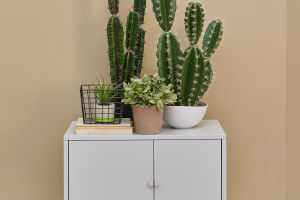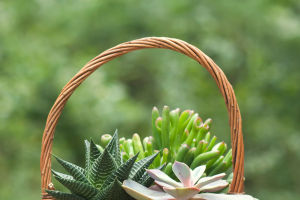In order for a potted cactus to bloom, it is crucial to provide the ideal growing conditions and meticulous care.
Cacti, classified as succulents, are generally quite easy to maintain. However, to coax out their stunning blossoms, you must pay heed to the following pivotal factors.
Part One: Lighting
Direct Sunlight: Cacti require a minimum of 6 hours of direct sunlight exposure. Position your potted cacti near sun-drenched windows or cultivate them outdoors to ensure they bask in ample sunlight.
Avoid Excessive Sun Exposure: While cacti relish sunlight, overexposure to intense rays, especially during scorching summer afternoons, can result in sunburn. In such instances, contemplate relocating your potted cactus to a partially shaded area.
Rotation: Regularly rotate your cacti to ensure uniform light distribution, thus preventing irregular growth patterns.
Part Two: Temperature
Temperature Range: Cacti typically flourish within the temperature range of 70°F (21°C) to 100°F (38°C) during the summer. In the winter, temperatures should not dip below 50°F (10°C). Maintaining these temperatures encourages cacti to bloom.
Cooling Period: Certain cacti varieties necessitate exposure to lower nighttime temperatures during the winter to trigger their flowering process. As autumn sets in, contemplate moving your potted cacti to cooler locations, taking care to avoid cold-induced damage.
Part Three: Moisture
Watering Technique: Employ deep watering practices, avoiding frequent irrigation. Allow the potting soil to thoroughly dry out before embarking on the next watering session. In the summer, you may find more frequent watering necessary, while in the winter, it should be reduced.
Prevent Standing Water: Ensure your pots possess adequate drainage to prevent moisture from being trapped around the roots, as excess moisture can instigate root rot.
Winter Watering Reduction: As cacti enter a dormant phase in winter, their water requirements decrease. Reduce watering during this period to prevent excess moisture accumulation around the roots.
Part Four: Fertilization
Appropriate Fertilizer: Utilize a fertilizer tailored for succulents, typically featuring a low-nitrogen formula. Fertilizing once a month during the growing season suffices.
Decreased Winter Fertilization: Cacti generally do not require fertilization during the winter due to their dormancy.
Adhere to Instructions: Always adhere to the instructions provided on the fertilizer packaging to avoid over-fertilization, which can be detrimental to your plants.
Part Five: Soil
Succulent Soil Mix: Employ a soil mix specially formulated for succulents or concoct your blend, incorporating components like peat moss, perlite or perlite, and sand. This mixture encourages optimal drainage and aeration.
Container Choice: Opt for containers equipped with ample drainage holes to facilitate efficient moisture drainage.
In summary, to coax your potted cacti into blooming, meticulous attention must be given to lighting, temperature, moisture, fertilization, and soil conditions. Additionally, regularly tending to and observing your plants is essential.
Keep in mind that different cactus varieties may have varying requirements, so it's advisable to familiarize yourself with the specific needs of your particular variety. By adhering to these guidelines, you can enhance the likelihood of your potted cacti producing stunning blooms for your enjoyment.


